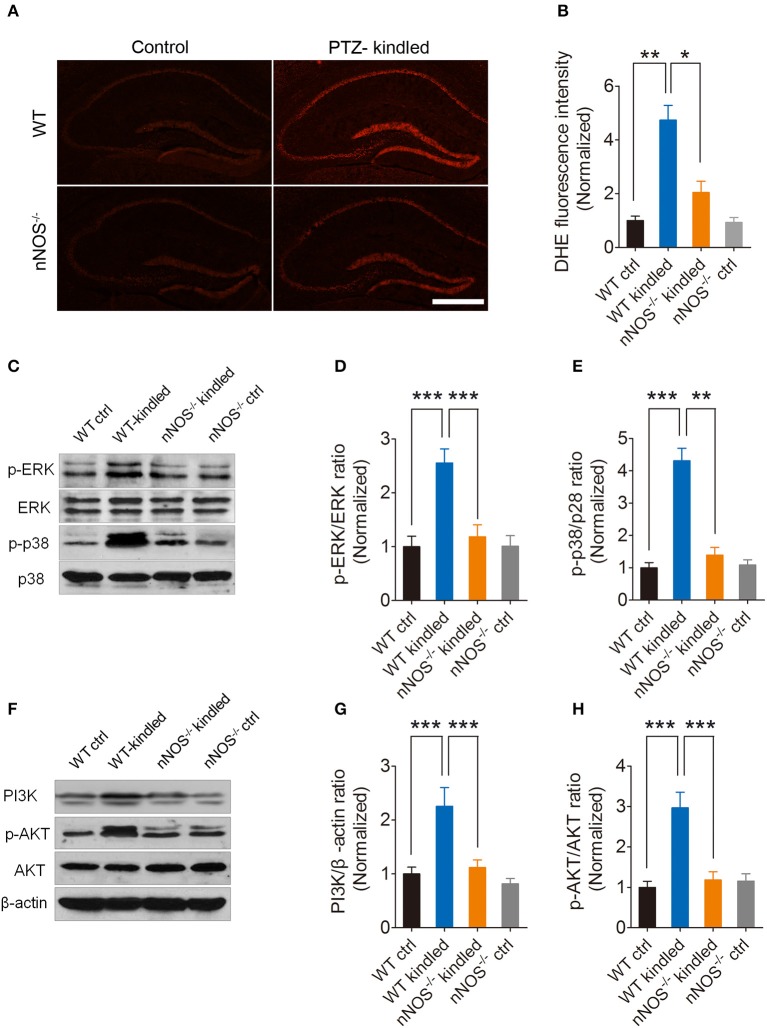Figure 5.
PTZ kindling induces nNOS-dependent ROS production and activates nNOS-dependent MAPK and PI3K/AKT signaling pathways. (A) Representative images of DHE fluorescence in the hippocampus of WT ctrl, WT kindled, nNOS−/− ctrl and nNOS−/− kindled mice. (B) Bar graph showing the quantification of the DHE fluorescence intensity, which represents the ROS levels in the hippocampus of WT ctrl, WT kindled, nNOS−−/−− ctrl and nNOS−/− kindled mice (n = 5). (C) Western blots showing the protein levels of p-ERK, ERK p-p38 and p38 in WT ctrl, WT kindled, nNOS−/− ctrl and nNOS−/− kindled mice. (D,E) Bar graphs showing the quantification of ERK and p38 phosphorylation levels which were represented as the ration of p-ERK/ERK and p-p38/p38 in WT ctrl, WT kindled, nNOS−/− ctrl and nNOS−/− kindled mice (n = 5). (F) Western blots showing the protein levels of PI3K, p-AKT and AKT in WT ctrl, WT kindled, nNOS−/− ctrl and nNOS−/− kindled mice. (G,H) Bar graphs showing the quantification of PI3K and AKT phosphorylation level which were represented as the ratio of PI3K/β-actin and p-AKT/AKT in WT ctrl, WT kindled, nNOS−/− ctrl and nNOS−/− kindled mice (n = 5). Values are means ± S.E.M. *p < 0.05, **p < 0.01, ***p < 0.001.

